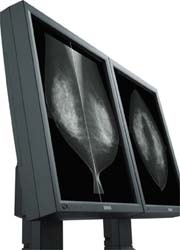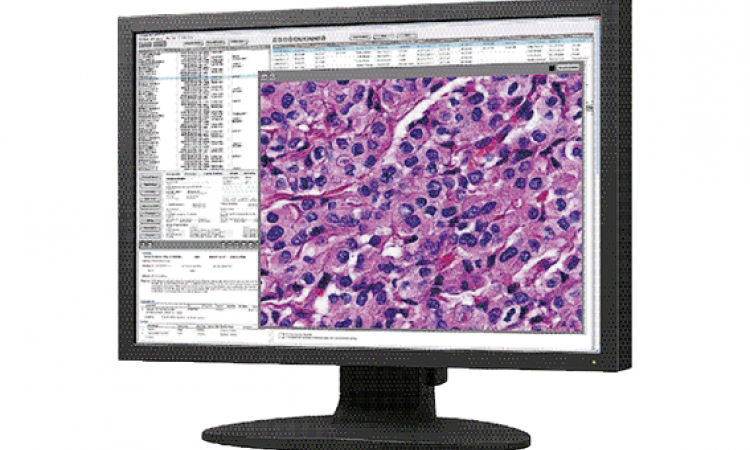Two mammograms on one screen
The first 15 megapixel DICOM display
The first 15 megapixels display, which enables radiologists to monitor two mammograms on one screen, was launched at RSNA 2007 by the Japanese firm Totoku.

The MS51i2 is based on a patent-pending ISD-technology (Independent Sub-pixel Driving) that produces an excellent depiction (without degradation) of an original image captured by the modality device. ‘Currently, monitors can display images with a maximum of five megapixels, whereas the detectors of many vendors can theoretically show 67 million image pixels. So our 21.3 inch monochrome display is coming far closer to the possibilities that modern radiological equipment offers,’ explained Dirk Cordt, General Manager Sales & Marketing, Totoku Europe GmbH.
While a pixel pitch of five megapixels displays is 165 µm, the new display achieves 55 µm in sub-pixel chain direction via the newly developed ISD technology. To display an overall image that has a resolution higher than the monitor can reproduce, the image is converted into a lower resolution image with a certain amount of data loss. A resolution of 15 megapixels offers an image reproduction without image degradation.
Until now, economies of scale have made development of such a display cost prohibitive. With the introduction of the MS51i2, Totoku said it now realises resolution levels of 15 MP as a breakthrough in softcopy diagnostic environment at a reasonable price.
Besides the new ISD technology, Totoku´s display offers a new Special AR (Anti-Reflection) Coating that tackles properties of focus, noise reduction, contrast, and viewing angle achieving film-like black and accurate image reproduction. Common Anti-Glare (AG) coated displays causes focus loss due to diffused reflection and increased noise because of the diffused light that overlaps with the displayed images. Therefore, some displays used in diagnostic imaging require such finite depiction that radiologists prefer a non-AG coated display, thus sacrificing reflective benefits but gaining a crisper image. The special AR coating is a surface treatment that solves this problem, and provides imaging without compromises, Totoku pointed out. ‘Of course it was necessary to adapt the software and make it suitable for 15 megapixels and already the first companies are aiming to do that. One well-known Japanese modality manufacturer is adapting its software to work with the 15 MP display,’ Dirk Cordt added.
Totoku will commence production of the MS51i2 in January 2008.
Details: http://www.totoku.com/display/
31.12.2007












